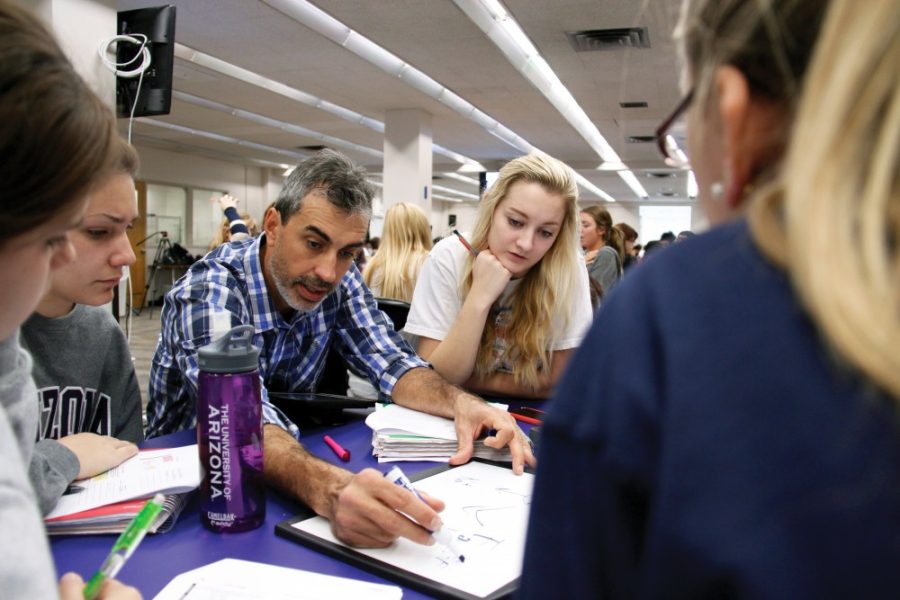The 2015 fall semester marks the first year chemistry professors John Pollard and Vicente Talanquer will be using their complete co-authored e-textbook, “Chemical Thinking,” for general chemistry courses.
The new book is part of an effort to fundamentally change the curriculum for general chemistry classes. Pollard, who has been a faculty member in the UA chemistry department for the last 15 years, said the “Chemical Thinking” curriculum is a departure from the traditional way of teaching the subject.
“The general framework is more topical-based without any obvious connectivity between various topics,” Pollard said. “‘Chemical Thinking’ shifts away from what a chemist knows and more about how they think.”
The effort spans back to 2008 when “Chemical Thinking” was implemented as a pilot program taught by Pollard. The program’s first semester of being fully implemented for the general chemistry courses was fall of 2014, but the general research that has gone into its formation goes back even further.
Talanquer, who also teaches general chemistry courses at the UA, has done extensive research into the effective education of science.
“For the past 20 years, we have accumulated data that shows that the traditional curriculum is not helping the majority of students to understand the concepts we’d like,” Talanquer said.
Talanquer said this research was crucial in creating a curriculum that supported more active and collaborative learning between students. Rather than presenting students with topics to memorize in a lecture setting, he and Pollard have worked toward a more engaging and hands-on approach.
“We use guiding questions that we try to answer through thinking like a chemist,” Pollard said. “Instead of traditional lectures, we ask students to engage real-time in class to apply these ideas while they’re building their knowledge.”
Jenna Tashiro, a psychology senior, was a student and preceptor for Pollard’s “Chemical Thinking” classes. She is currently his research assistant working on the curriculum, and helps to provide information on student performance and engagement.
“The curriculum [is] generally more active,” Tashiro said. “It takes the concepts that you just learned and asks you to practice them with other students, the professor and TAs”
Along with more applied learning, Tashiro also said “Chemical Thinking” pushes students to confront deeper questions about their education. A major part of the course is students learning the underlying reasons for why things such as group activities are still important, even in an age of more online classes.
While it can be a sudden adjustment from traditional chemistry courses in high school, Tashiro said that “Chemical Thinking” was crucial in preparing her for upper tier chemistry classes with more applied learning, like organic chemistry.
“I think all subjects could benefit from a more active learning style,” Tashiro said.
Pollard and Talanquer are continuing to move their approach forward to other potential courses.
“By 2017, the changes we made to the curriculum will be up for review by the general chemistry faculty,” Talanquer said, which is when more data will be available to evaluate the effectiveness of “Chemical Thinking.”
In the meantime, Pollard said they are focusing on making a course specifically for honors students with the new curriculum.
Follow Isaac Rouseville on Twitter.








